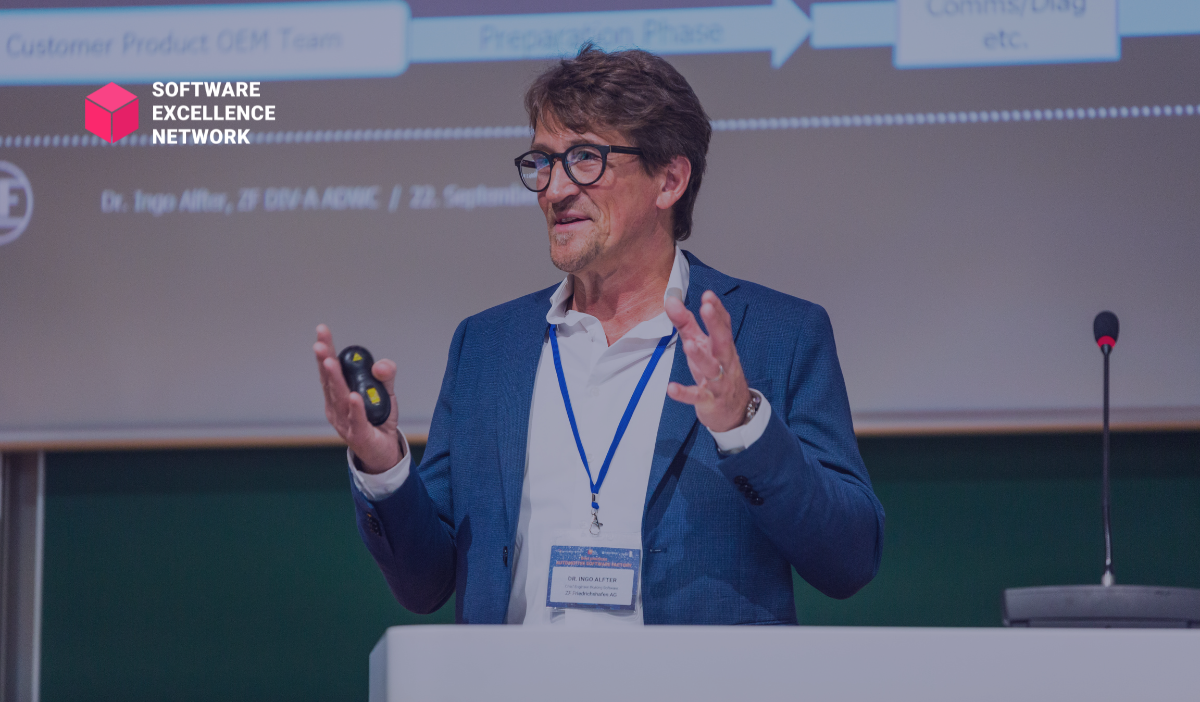
The automotive industry is undergoing a seismic shift. Once defined by mechanical engineering excellence, the future of mobility is increasingly shaped by software. At the heart of this transformation is a fundamental question: How can car manufacturers and suppliers develop, deploy, and maintain software that is not only innovative but also secure, scalable, and compliant with the strict real-time requirements of safety-critical systems?
During a recent industry event, automotive software expert Dr. Ingo Alfter shed light on the immense challenges and opportunities facing CIOs as they navigate this transition. His insights reveal a complex landscape where software factories, cybersecurity, and over-the-air (OTA) updates are becoming as critical as horsepower and torque.

Unlike traditional enterprise software, where minor delays may be inconvenient but not catastrophic, automotive software—especially for safety-critical functions—must operate within precise real-time constraints. A braking system that responds a fraction of a second too late isn’t just inefficient; it’s a liability.
Alfter raises concerns about whether modern IT methodologies, such as containerized software and open-source frameworks, can fully meet these demands. For the automotive industry, it’s not just about whether software runs—everything has to happen at exactly the right time, he explains. The challenge isn’t simply one of execution but of synchronization across an increasingly complex digital ecosystem.
Data has long been heralded as the new oil, but in automotive software, it remains largely underutilized. While OEMs already collect vast amounts of vehicle data during development, large-scale, systematic aggregation from deployed vehicles is still in its infancy.
Today’s vehicles generate terabytes of data, yet much of it remains locked in proprietary silos. Alfter suggests that while the industry has made progress in leveraging real-world driving data, the full potential is far from realized. Unlike ADAS (Advanced Driver Assistance Systems), which rely on targeted data collection, vehicle-wide software optimization requires a broader, more standardized approach to data sharing and utilization.
Traditional automotive development models relied on tight integration between hardware and software teams. Engineers developing software for braking systems, for example, worked in close coordination with hardware teams designing the actuators. However, as software complexity increases, this model is proving unsustainable.
Instead, leading automotive players are adopting modular architectures that allow different software components to evolve at their own pace. Alfter describes this shift as a move toward software-defined architectures, where teams work on independent layers of functionality, integrating them later in the development process. This enables faster innovation cycles but introduces new challenges, particularly in testing and integration.
One of the biggest challenges facing automotive CIOs is ensuring long-term cybersecurity resilience. A vehicle that rolled off the production line three years ago with fully certified software may suddenly become vulnerable to new threats.
The industry is grappling with a fundamental shift: software updates are no longer a luxury but a necessity. Yet, resistance remains. Some in the organization may not understand why software needs to be updated when it was already approved, Alfter notes. The reality is that automotive cybersecurity isn’t static—it’s a continuous process requiring vigilance, adaptability, and cross-industry collaboration.
The introduction of OTA updates has been a game-changer, enabling remote fixes and feature enhancements without requiring vehicles to return to dealerships. However, Alfter warns that standardization remains a key hurdle. Different OEMs take vastly different approaches to software deployment, leading to fragmentation in how software interacts with critical vehicle functions.
For example, in braking systems, some manufacturers insist on full in-house software development, while others are willing to integrate external software. The challenge will be finding a standard that allows for differentiation while ensuring safety and interoperability, as Alfter explained.
As automotive companies move deeper into the realm of software-defined vehicles, CIOs are playing a more strategic role than ever before. The shift is not just about implementing new technologies—it’s about redefining how software is conceptualized, developed, and maintained over the lifecycle of a vehicle.
The future of the industry will be shaped by those who can balance real-time constraints with innovation, leverage data at scale, and ensure cybersecurity without slowing down development. As Alfter’s insights make clear, the road ahead is complex—but for those who master it, the destination promises to be transformative.
The Software Excellence Network is a premier community for executives, thought leaders, and innovators dedicated to advancing software strategy, efficiency, and security in large-scale enterprises. Focused on best practices, cutting-edge technologies, and industry insights, the network empowers decision-makers to drive digital transformation and optimize software development for competitive advantage.
Note to Readers: While I attempted my best to cover the topics Dr. Ingo Alfter discussed in his masterclass, to understand the full context of his ideas, I recommend you watch his masterclass below. You can message me if you have any questions or concerns.
These Stories on Events/Webinars
August-Bebel-Str. 26-53
14482 Potsdam, Germany
hello@seerene.com
+49 (0) 331 706 234 0
Generative AI Seerene GmbH
August-Bebel-Str. 26-53
14482 Potsdam, Germany
hello@seerene.com
+49 331 7062340